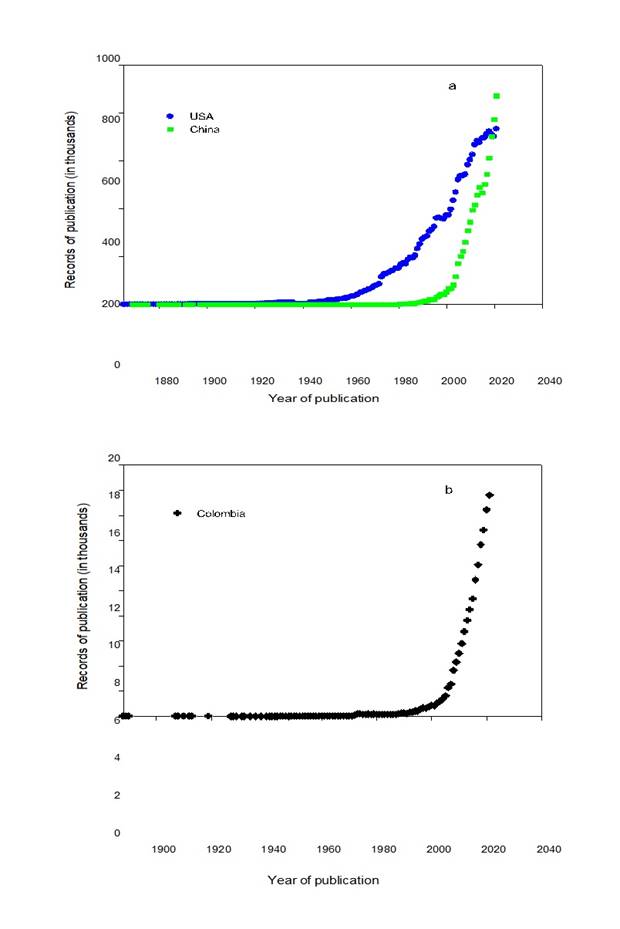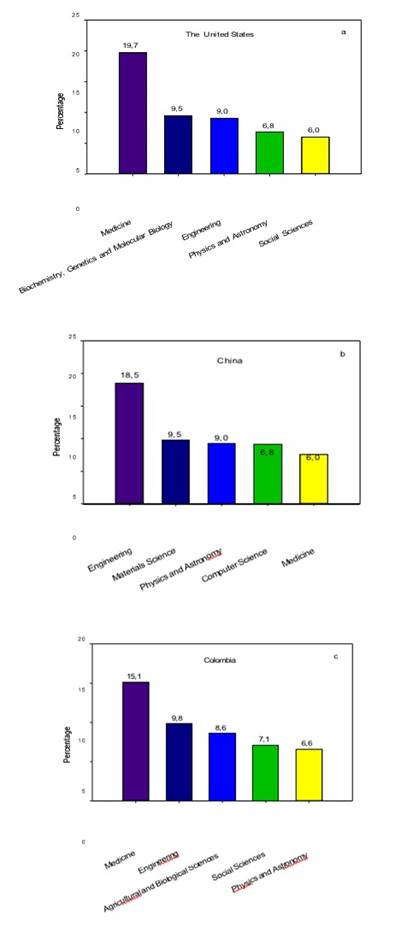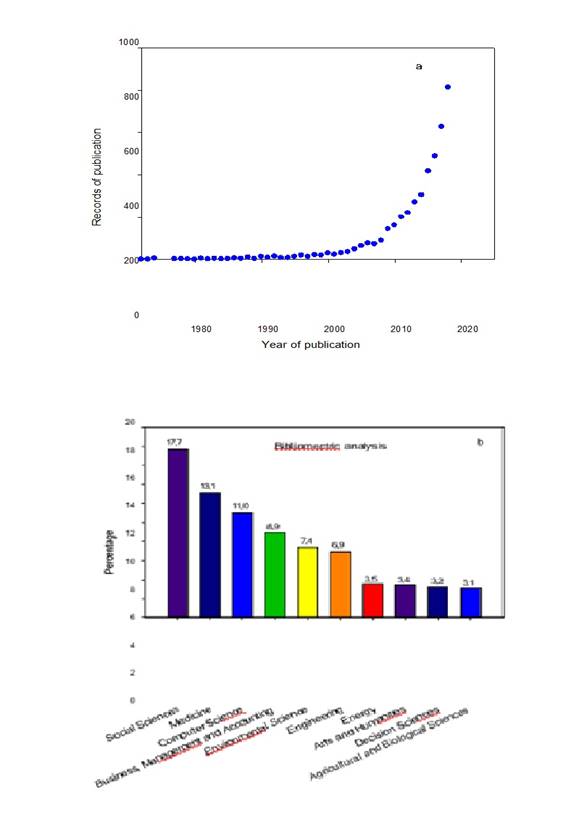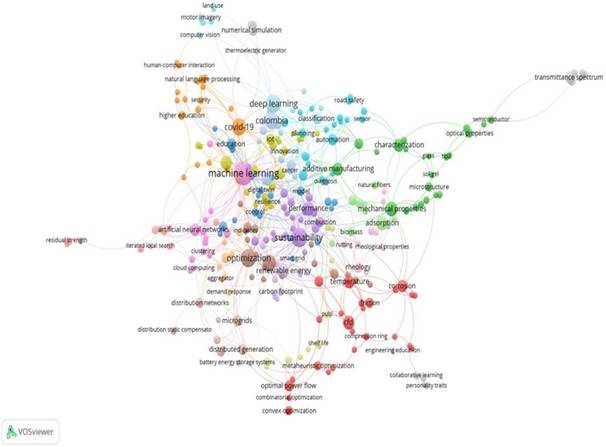Dear editor,
Communication of scientific knowledge is key in the scientific method, and it is necessary for the advance of science and technology. The rapid advance of ICTs has had a tremendous impact on science communication. This is clearly reflected by the exponential increase in the number of scientific publications worldwide in the last five decades. The highest contribution numbers belong to the industrialized economies, given their high investment rates in education, science, technology
and innovation. For example, only researchers with affiliations of institutions in the United States and China account more than 20,3 and 8,4 million scientific publications indexed in Scopus by 2021, which is one of the broadest and more reliable interdisciplinary scientific databases (Fig 1a); these countries reported a GDP of 22996 and 17734 billion USD by 2021, respectively. Of those scientific outputs, the engineering and technology disciplines contributed with 9.0 and 18.5%, respectively. As displayed in Fig. 2, China exhibits its highest contribution in the engineering and technology field, while for the United States this discipline ranked third. This fact reflects the scientific and economic development of both countries as big players in global industrial production and high-tech fields. Their economic development is undoubtedly connected to science. For the Colombian case, a total of 156.4 thousand records were retrieved in Scopus up to 2021, and the engineering field ranked second with 9.8% of the publications (Figs 1b and 2).

Figure 1 Evolution of the number of scientific papers indexed in the Scopus database. a) The United States and China. b) Colombia.

Figure 2 Distribution of publication by field of knowledge. a) The United States, b) China, c) Colombia.
The accumulated volume of scientific publications offers enough information for a deep analysis of any research topic. Nevertheless, in some cases, a detailed and holistic analysis of the advances of research in a topic of interest is not straightforward since it is not possible to read/analyze all the scientific papers available. In many cases, the scientific outputs are over several thousand, which difficult to get a global overview on a topic or field of knowledge, then researchers access only to a part of the knowledge available in the scientific literature, usually constrained in terms of relevancy and time. A complete and detailed scientific review allows to find gaps in the current knowledge and to identify opportunities to move the borders of the knowledge. In addition, a scientific review is a key and continuous task in the formulation of high-impact and academic research. Therefore, tools for monitoring scientific publications and extracting information from a high volume of published papers are currently in demand. In this regard, bibliometric analysis plays an important role in monitoring research topics and scientific efforts in a specific field, offering to the scientific community a panorama of the impact and evolution of the research during a definite timespan, networking and collaboration, connections between fields and disciplines, topics of relevance, and emerging topics 1. Starting from information available in the most reputable scientific databases like Scopus, Web of Science, PubMed, etc., some tools allow to analyze authors’ keywords and their relationship, connections between countries and researchers and institutions, journals, fields and disciplines, funders/sponsors, among others 2,3. It is important to highlight that bibliometric studies are exponentially increasing so do their relevancy in science (Fig 3). The engineering disciplines have contributed with 6.9% of the records, indicating that scientometrics is still an emerging tool in scientific mapping and technology surveillance for research purposes.

Figure 3 Bibliometric analysis studies. a) Evolution of the number of published papers using a bibliometric analysis approach. b) Distribution of bibliometric analysis publications by field of knowledge.
Open-source software such as VOSviewer or Bibliometrix (an R-based tool) have been reported and used as suitable tools for scientific mapping and bibliometric analysis in a wide range of research fields (Fig 3 and 4) 2-7. This approach allows the continuous review of millions of data on the global research ecosystem, providing information for scientific decision making, and facilitating the access to valuable information on a specific field of knowledge. Such tools help to continuously monitor and generate analysis on scientific developments that are the precursors of current and future research worldwide.















